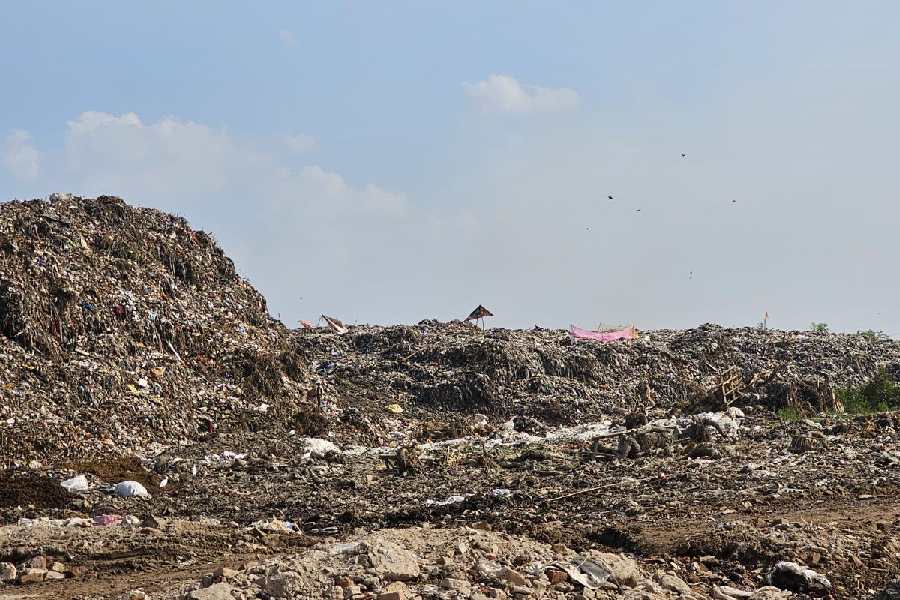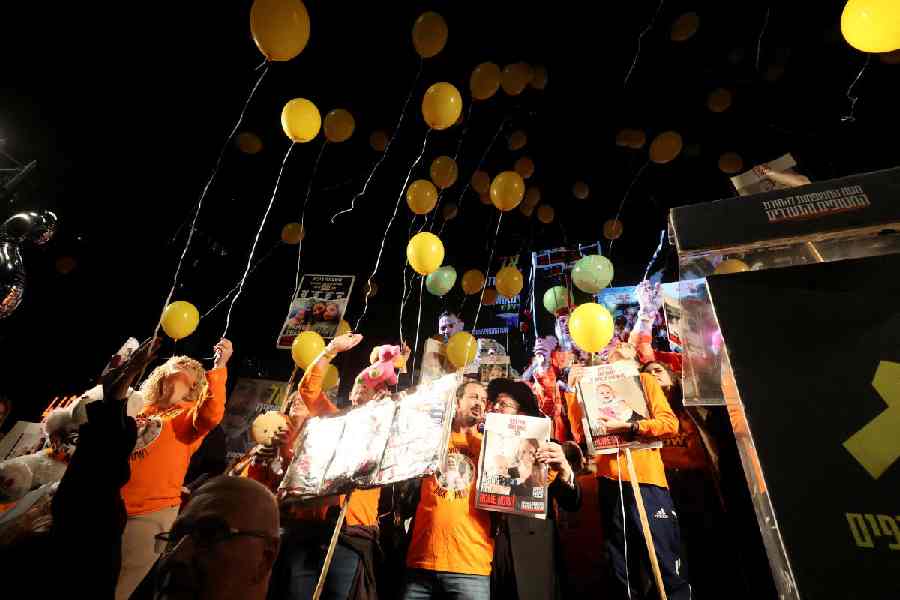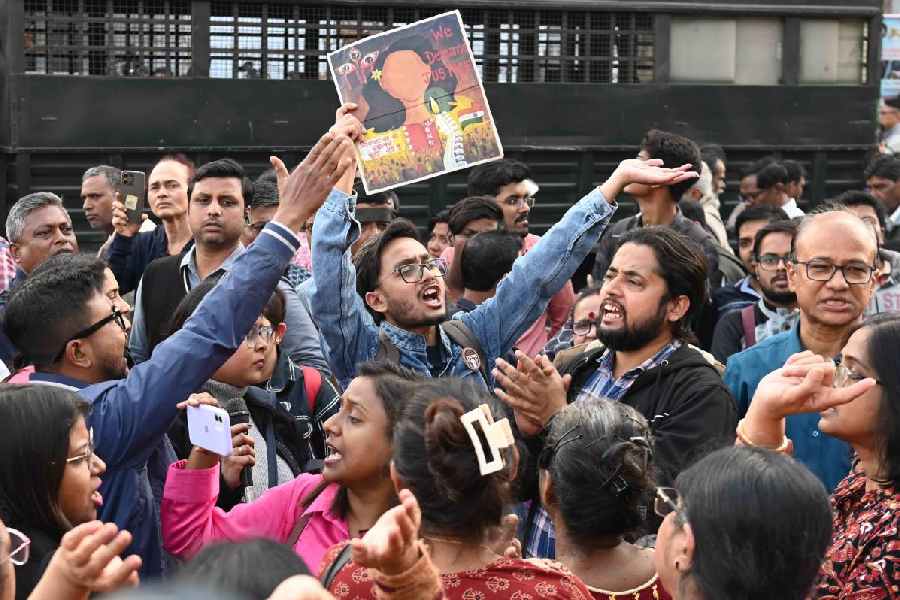A fortnight ago, residents of several highrises in New Town were upset at the disruption of the daily process of garbage collection from their complexes.
Social media groups were agog with outraged comments on garbage bins overflowing and overbearing stench. Angry mails were shot off to the New Town Kolkata Development Authority (NKDA) demanding an explanation. The matter was reported to be resolved the week after, by November 5.
“There was a problem regarding disposal of garbage at the Dhapa dumping ground, where our entire waste goes. Our vehicles were not being allowed in for some days. We brought that to the notice of the (Kolkata Municipal Corporation) commissioner. He has sorted out the matter,” an NKDA official told The Telegraph Salt Lake.
A KMC official said that a new arrangement had been worked out. “Dhapa is a small place. Other than our own vehicles, there are vehicles carrying garbage coming in from BMC (Bidhannagar Municipal Corporation), NKDA, NDITA (Naba Diganta Industrial Township Authority), and since last April, Panihati Municipality. With so many vehicles coming in, there was subsidence in one spot. After that, we had asked the NKDA vehicles to dump their garbage in the same spot as BMC’s. But they got into arguments over whose vehicle would get priority in passage to the designated site. Now we have asked NKDA and NDITA to dump their waste along with us,” said a KMC official, explaining how the problem was resolved.
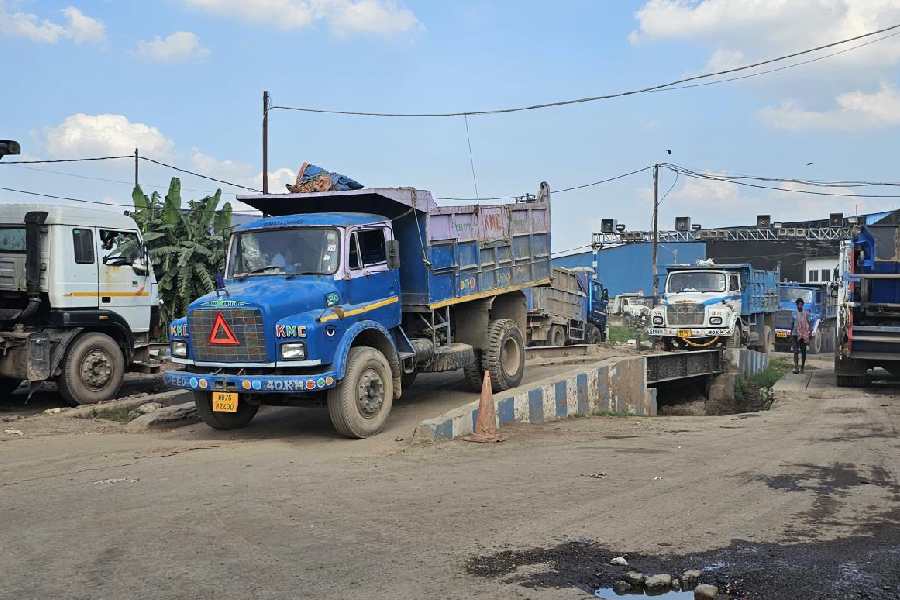
A garbage van on a weigh bridge at Dhapa.
But while New Town residents are pacified by the resumption of regular garbage collection and officials are breathing easy at the impasse being amicably broken, a long-term solution remains a mirage. In fact, the city is staring at impending disaster with regard to solid waste management if immediate steps are not taken.
“Bhogobaner naam kore manage korchhi. If there is an explosion (at the dumping ground) there is a chance of a crack over a radius of about 2km,” said the KMC official. Methane is the main component of landfill gas and is highly flammable.
He was alluding to a similar accident that took place in 2005 as a result of which an entire bheri had got solidified. “There was a pressure build-up underneath, causing a subsidence. The ground below shifted to the next bheri causing its water to spill out onto the adjacent bheri. Such a blast is waiting to happen again. We keep our fingers crossed when we go on inspections as there is no knowing when a similar catastrophe happens again,” he said.
For the unaware, the Dhapa landfill lies east of the Bypass and is accessed by a road opposite the Spring Club. Originally a part of the East Kolkata Wetlands, it started being used to dump unsegregated waste in 1987. Dhapa was then spread over 35 hectares — a little over the size of the Salt Lake stadium. Concerned about the mounds of waste, also called legacy waste, accumulating on and blocking precious urban land across the country, the National Green Tribunal (NGT), in 2019, had directed all states to adopt biomining and bioremediation as methods to allow extraction of usable materials from litter.
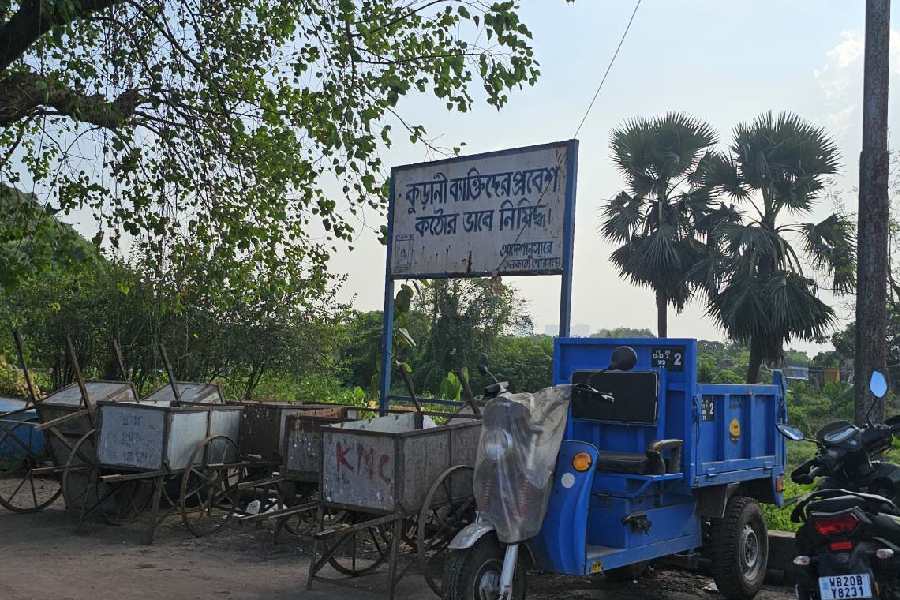
A signage at Dhapa forbidding entry to ragpickers
With support from a World Bank project and following an NGT guideline, 12 hectares of Dhapa land have been closed, capped and covered with grass after sheathing the waste with geo-textile membrane. Even the rest of the area is supposed to be reclaimed after the legacy waste is processed. The state government has failed multiple NGT deadlines to complete the work, the latest being June 2024.
So far, according to sources, the KMC has managed to process 37 per cent of the legacy waste. “In terms of absolute quantity, the volume of unsegregated accumulated waste came to about 40 lakh metric tonnes when we prepared the tender documents in 2020. Of that, we have managed to process 13.4 lakh metric tonnes. We suspect the actual quantity today has risen to 70 lakh metric tonnes by now,” an official said.
The KMC has identified 73 hectares of its own land to the left of Basanti Highway to set up its processing plant as dumping of untreated waste has been banned by the NGT. But farmers who have been farming on the unutilised land for years have claimed compensation. “We have surveyed the area and found the number of affected farmers to be 883. A total compensation amount of Rs 55 crore has been worked out. They have prevented us from completing the fencing of the area till the amount is paid. The finance department wants to know what kinds of crops are grown there and their market rate. The solatium file is doing the rounds for over six months without any positive outcome,” the official lamented. This has stalled the floating of the tender which needs to specify the land where the projects will come up.
40 storeys tall & climbing
The mountain of waste has reached a height of 135m-140m, which makes it as tall as a 40-storeyed building. “On top of this is being added more and more waste daily. The KMC area generates 4,500 tonnes per day. Of that, we process about 1,025 tonnes. But the other urban local bodies — Bidhannagar, NKDA, NDITA and Panihati — are dumping another 600-700 tonnes. BMC, which was barred by an NGT order from using Mollar Bheri as dumping site in 2019, generates 350-400 tonnes by itself,” an official said. Mollar Bheri, in the wetlands, was used by NKDA and NDITA as well.
According to sources, the KMC had tried setting up solid wasteprocessing plants in Kharamba, inBhangore, but locals threatened ablood bath if Calcutta’s waste wasbrought to the area. Another attemptto use 210 hectares in Behuta was unsuccessful as well.

Garbage collection in Salt Lake
“This parcel of 73 hectares is ourlast chance at starting scientific processing of waste. The more we delay,the worse will the situation get,” asenior KMC official warned. “Otherwise, in another 15 years, Calcuttawill be submerged.”
Scene in New Town
KMC officials want the otherurban local bodies to deal with theirown garbage without putting pressure on Dhapa. New Town has a blueprint ready for both peripheral andancillary management, on the basisof which it has been selected as oneof the 18 cities in the second phaseof the central government’s City Investments To Innovate, Integrate andSustain (CITIIS) programme thataims to drive investments into urbanclimate action through competitivelyselected projects promoting a circular economy with focus on integratedwaste management. Circular economy refers to a system where waste isreused and recycled to decrease theuse of natural resources and limitgreenhouse gas emissions.
Under the plan, three integratedwaste processing plants will be built,for which Hidco has handed over landat three spots — about eight acres inAction Area 1, 10 acres in Action AreaII and about seven acres in ActionArea III. “The project cost will come toRs 172 crore, so we expect to get the entire ceiling amount of the CITIIS programme, Rs 135 crore, to come as grantfrom Delhi,” an NKDA official said.
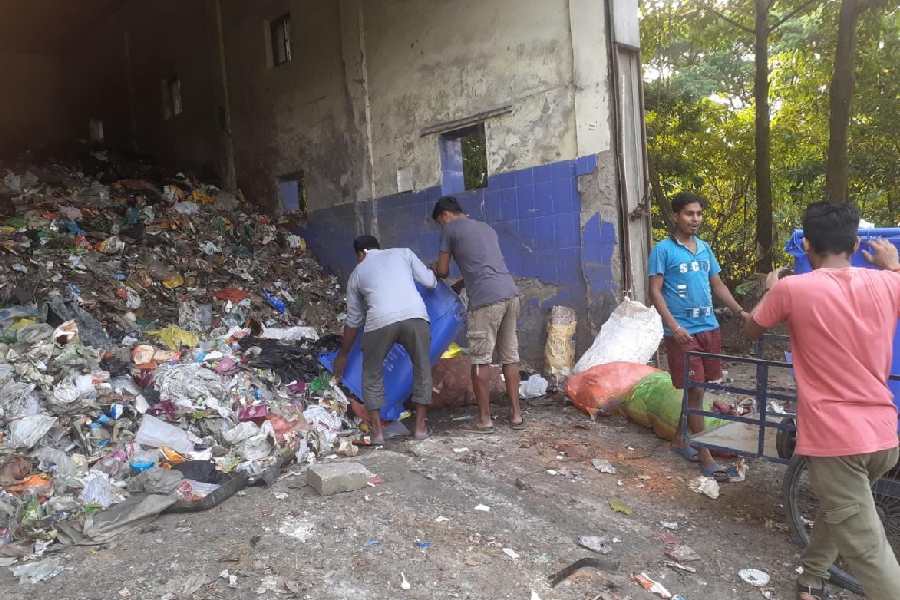
Garbage collection in New Town
Currently, New Town generates about 85 tonnes of waste per day.“Calcutta needs more and more treatment plants where the garbage can be processed. Getting land is a problem as people resist setting up plants in their neighbourhood. They do not understand that a treatment plant,scientifically established keeping adequate buffer and properly covered,is safe for the area’s hygiene. Even if they know it is necessary for the health of the city, their mindset in what is called the not-in-my-backyard syndrome. It is the open vats that are the real health scares, including being breeding grounds of vector-borne diseases like dengue,” a civic body official lamented.

